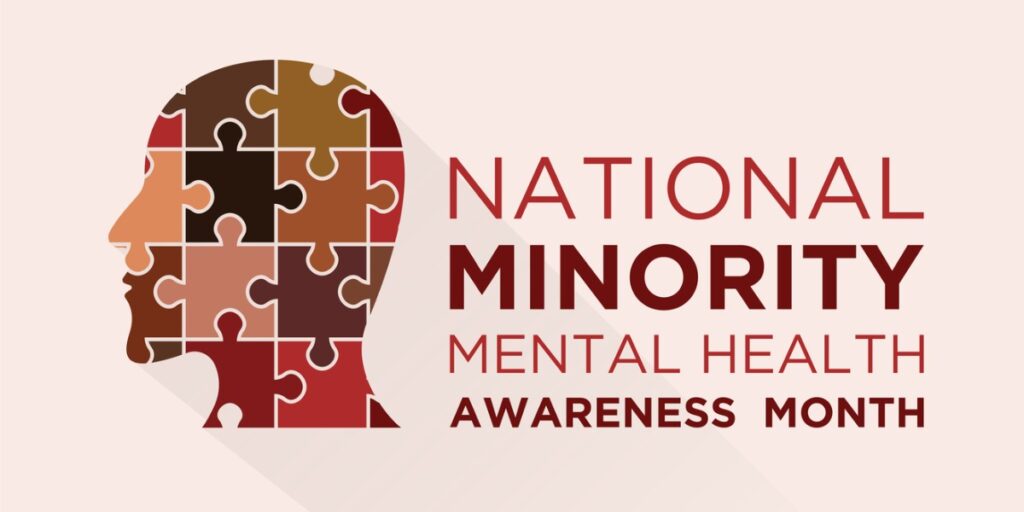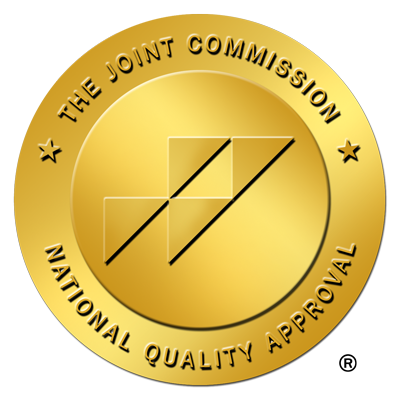Post-traumatic Stress Disorder (PTSD) / Trauma-Related Disorders
Children, teens, and young adults diagnosed with post-traumatic stress disorder (PTSD) and trauma-related mental health disorders often experience very disturbing symptoms that prevent their full engagement in daily activities related to school, family, work, and typical social situations. The symptoms of PTSD may also impair their ability to form and maintain the type of supportive relationships they need to address their trauma and start the process of healing and growth.
PTSD and trauma-related disorders require compassionate support delivered by experienced, empathetic clinicians. At BACA, we excel at this type of treatment, called trauma-informed care.
Treatment for PTSD and Trauma-Related Disorders: Creating a Safe, Stable, Environment for Healing and Growth
At BACA, our first goal is to establish the trust required to form a meaningful, effective therapeutic relationship. With a foundation of trust, we can help our patients address and resolve the emotions related to their past trauma and move forward toward a full and fulfilling life.
What is Trauma?
The American Psychological Association (APA) defines trauma as:
“…any disturbing experience that results in significant fear, helplessness, dissociation, confusion, or other disruptive feelings intense enough to have a long-lasting negative effect on a person’s attitudes, behavior, and other aspects of functioning. Traumatic events include those caused by human behavior as well as by nature and often challenge an individual’s view of the world as a just, safe, and predictable place.”
Events considered stressful or traumatic that may lead to trauma-related disorders and post-traumatic stress disorder (PTSD) include:
- Rape/sexual assault
- Non-sexual physical assault
- Major injury/accident
- Physical, emotional, or sexual abuse during childhood
- Witnessing violence
- Experiencing war/living in war zone
- Physical or emotional neglect during childhood
- Natural disasters such as floods, hurricanes, wildfires, tornadoes
- Witnessing severe injury or death of another person
- Death of loved one
While experiencing these events doesn’t mean an individual will develop a mental health disorder, experiencing these events dramatically increases the likelihood of developing a trauma or stress-related disorder, especially if the individual does not engage professional support to process the complex emotions that may appear after the event occurs.
What are Trauma-Related Mental Health Disorders?
Trauma related mental health disorders result from direct or indirect exposure to a traumatic or stressful event. The Diagnostic and Statistical Manual of Mental Disorders, 5th Edition (DSM-5) identifies the following trauma-related disorders:
- Posttraumatic stress disorder (PTSD)
- Acute stress disorder
- Adjustment disorders
Post-Traumatic Stress Disorder (PTSD)?
The Diagnostic and Statistical Manual of Mental Disorders, Volume 5 (DSM-V), the standard professional reference for mental health providers, defines PTSD as:
“A disorder that may result when an individual lives through or witnesses an event in which they believe that there is a threat to life or physical integrity and safety and experiences fear, terror, or helplessness.”
Signs and Symptoms of PTSD
Mental health professionals identify four categories of PTSD symptoms:
Intrusive Thoughts and Memories
These may include or cause:
- Memories of the traumatic event
- Re-experiencing the traumatic event
- Nightmares
- Insomnia
Avoidance Behavior
When a person with PTSD is preoccupied with avoiding people, places, or things that trigger memories of their traumatic experience, it’s called avoidance behavior. Avoidance behavior may include:
- Never thinking or talking about the traumatic experience(s)
- Pretending the event didn’t happen
- Not going to places that trigger memories of the traumatic experience(s)
- Not interacting with anyone associated with the traumatic experience(s)
- Leaving a situation that triggers memories of the traumatic experience(s)
Negative Changes: Thoughts and Emotions
A patient with PTSD may engage in negative patterns of thought and emotion caused by or related to the traumatic experience(s). Negative patterns associated with PTSD may include:
- Depressed mood/thoughts
- Persistent hopelessness
- Decreased self-esteem
- Persistent fatigue
- Self-medication with drugs/alcohol
Hyperarousal: Negative Changes in Physical/Emotional Responses
Patients with PTSD may develop extreme and atypical physical and/or emotional reactions to events in their lives or factors present in their environment. Negative physical and emotional reactions may include:
- Being easily startled
- A feeling of being on guard/watching out for danger almost all the time
- Risky behavior, or escalating risky behavior around alcohol/substance use, sexual activity, or other behaviors that increase physical or emotional risk
- Excessive anger/getting in physical fights
- Strong feelings of embarrassment or shame
In addition, it’s important to understand the presence of PTSD increases risk of mood disorders such as depression or the disordered use of alcohol or drugs, which can exacerbate the symptoms of PTSD.
To meet the clinical criteria for a diagnosis of PTSD, an individual must:
- Have a history of trauma or traumatic events
- Experience symptoms related to trauma every day for at least a month
- Experience significant disruption caused by symptoms
- Display symptoms from each of the four categories listed above
- Not have an alcohol use disorder, substance use disorder, or mental health disorder that better explains the symptoms
Acute Stress Disorder
The DSM-V defines acute stress disorder as follows:
“An intense, unpleasant, and dysfunctional reaction beginning shortly after an overwhelming traumatic event and lasting less than a month.”
To meet the clinical criteria for a diagnosis of acute stress disorder, a patient must experience direct or indirect exposure to a traumatic event, and display at last 9 of the following symptoms for more than 3 days and less than one month:
- Persistent, unwanted, intrusive, distressing memories of the event
- Recurring dreams of the event
- Flashbacks, i.e. the feeling the traumatic event is happening again
- Severe distress when thinking of the event
- Persistent inability to experience positive emotions
- Altered sense of reality, i.e. feeling dazed, confused, or in a haze
- Inability to remember essential components of the traumatic event
- Extreme efforts to avoid memories or emotions associated with the event
- Extreme efforts to avoid external people, places, things, or situations associated with the event
- Sleep problems
- Uncharacteristic anger/irritability
- Hypervigilance, i.e. excessive attention to possible danger
- Problems with concentration
- A heightened/exaggerated startle response, i.e. extreme reactions to typical external stimuli
In addition, symptoms must cause significant distress and not be better explained by alcohol/drug use or the presence of another mental health disorder.
Adjustment Disorder
The DSM-V defines adjustment disorder as follows:
“The presence of emotional and/or behavioral symptoms in response to an identifiable stressor.”
To meet clinical criteria for a diagnosis of adjustment disorder, a patient must display the following types of symptoms within three months of direct or indirect exposure to a stressful or traumatic event although their symptom levels fall short of criteria other diagnoses, such as Major Depression or Generalized Anxiety Disorder:
- Depressed mood/depressive symptoms
- Anxiety, symptoms related to anxiety disorders
- Conduct problems/misconduct
Consequences of Untreated PTSD/Trauma-Related Disorders
The consequences of untreated trauma and/or PTSD can appear as emotional, psychological, or physical problems, which may include:
- Depression
- Anger/aggression
- Anger management issues
- Isolation
- Suicidality
- Alcohol/drug use
- Unstable relationships
- Impaired work performance
- Impaired academic achievement
- Risky behavior associated with sex, alcohol/drugs, and cars
- Elevated risk of physical pathology including diabetes, hypertension, and cardiac disease
Support for PTSD and Trauma-Related Disorders: Trauma-Informed Care
The most effective approach to treating PTSD and other trauma-related disorders is called trauma-informed care. At BACA, we recognize the best practices in trauma informed care as defined by the Substance Abuse and Mental Health Services Administration (SAMHSA).
Trauma informed care revolves around three principles and six guidelines.
Principles of Trauma-Informed Careigen
- Clinicians must understand trauma and have practical experience tailoring treatment to meet the unique needs of patients with a history of trauma.
- Clinicians must know how to identify the specific symptoms of trauma.
- Clinicians must know how to avoid re-traumatizing patients during treatment
Trauma-Informed Care: Guidelines
- Safety. Patients must feel safe and secure in the treatment environment.
- Trust. Clinicians must work to create real trust and establish a healthy, trusting treatment alliance.
- Peer Support. Interaction with and support from others who have a history of trauma improves treatment outcomes.
- Collaboration. Patients and clinicians must work together to identify treatment goals and how to reach them.
- Empowerment. Clinicians must recognize the courage it takes for patients to face and resolve trauma, and help patients develop skills to direct their own healing
- Cultural Competence. Clinicians must be aware that institutional trauma has a multigenerational impact, and must work to transcend stigma related to race, ethnicity, age, cultural heritage, gender, gender identity, or sexual orientation.
Trauma-Informed Care at BACA: Evidence-Based Treatment, Experienced Clinical Team
We adapt all treatment modalities to meet the principles and guidelines or trauma-informed care presented above. Therapeutic modalities for PTSD and trauma related disorders at BACA include, but are not limited to:
- Psychotherapy:
- Trauma Focused Cognitive behavioral therapy (TF-CBT), including
- Cognitive processing
- Desensitization
- Emotion identification/regulation
- Trauma Focused Cognitive behavioral therapy (TF-CBT), including
- Medication:
- SSRIs, including sertraline, paroxetine, and fluoxetine
- SNRIs, including venlafaxine, duloxetine
At BACA, a treatment plan for a person – child, adolescent, or young adult – with PTSD or a trauma related disorder includes the following:
- Education about PTSD and trauma
- Education about treatment for symptoms of PTSD and trauma
- Psychotherapy, such as CBT, CPT, or PE
- Prescription medication, if indicated
- Group counseling
- Family counseling
- Complementary/expressive therapies
At BACA, we learn about each patient and understand what works for them. We design a treatment plan that leverages strengths, addresses challenge areas, and gives each individual the greatest chance of resolving past trauma, managing the symptoms of PTSD and trauma-related disorders, and achieving stable, sustainable, long-term recovery.






